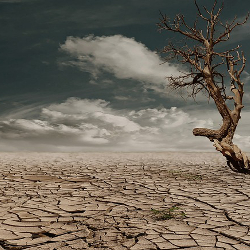
How Capturing Rain Could Save Mexico City from a Water Crisis
As is common in our world, those in Mexico with the least resources suffer the most. Low income and informal neighbourhoods have the least access to safe water, exposing them to high health risks, such as diarrhoea and parasitic and bacterial diseases. Many of them depend on pipas, or water trucks, which aren’t always reliable. The average Mexican family can spend up to 20% of its income on water.
More than 10 million Mexicans lack access to safe water and its capital, Mexico City, is ranked third on the list of cities facing an extreme water crisis. But this is not because of natural water scarcity. In fact, Mexico City receives roughly five months of rain a year and is notorious for flooding.
July 6, 2016 | Source: The Guardian | by Sol Garcia
As is common in our world, those in Mexico with the least resources suffer the most. Low income and informal neighbourhoods have the least access to safe water, exposing them to high health risks, such as diarrhoea and parasitic and bacterial diseases. Many of them depend on pipas, or water trucks, which aren’t always reliable. The average Mexican family can spend up to 20% of its income on water.
More than 10 million Mexicans lack access to safe water and its capital, Mexico City, is ranked third on the list of cities facing an extreme water crisis. But this is not because of natural water scarcity. In fact, Mexico City receives roughly five months of rain a year and is notorious for flooding.
The problem is due to the the city’s infrastructure and mismanagement of water. In Mexico City, around 70% of water is extracted by aquifers, more than the amount that can be naturally recharged. The city was built over a lake bed and as such, has sunk 10 metres over the past 100 years. What’s more, 30% of Mexico City’s water comes from 150km away through the Lerma-Cutzamala water system, located in an area where many indigenous people themselves face water scarcity. This process of pumping the water from far afield results in high energy costs and 40% of it is lost in transit due to leaky pipes. With roughly 20 million inhabitants, a water crisis in Mexico City is a threat to the whole country.
This is where Isla Urbana comes in. In 2009, the founding team of engineers, designers and sociologists designed a rainwater harvesting system to enable communities to catch rain, filter it and use it for the greater part of the year, without having to depend on an unsustainable system.
To better understand the needs of communities, the Isla Urbana team moved into and worked out of a building in Tlalpan, across the street from the first person to use its system, Clara Gaytan. From there, they began assisting her neighbours. The team conducted pre- and post-construction interviews, trained members of the community and hired local plumbers to install systems.
Cisterns are the most expensive component of the process but, fortunately, most homes in Mexico already have one. This has helped to keep the cost of installations low, from $500 for those who already had a cistern to $1,000 for those who do not. Isla Urbana, a hybrid social enterprise and non-profit, is funded through Mexican government entities, joint projects with NGOs, grants and the Isla Urbana Foundation. Households also contribute 15% towards installation of the rainwater harvesting system to promote ownership and responsibility.
